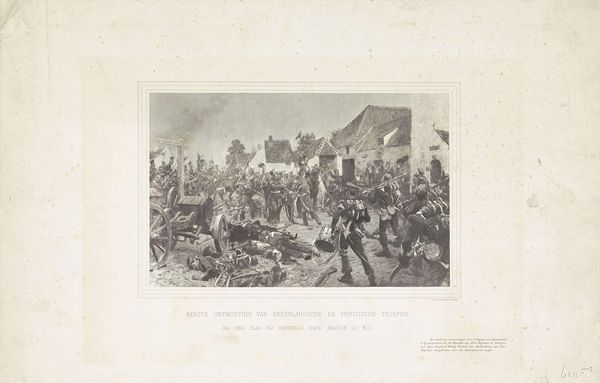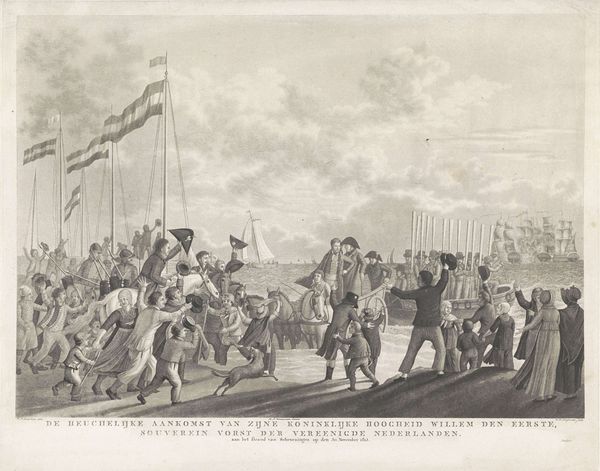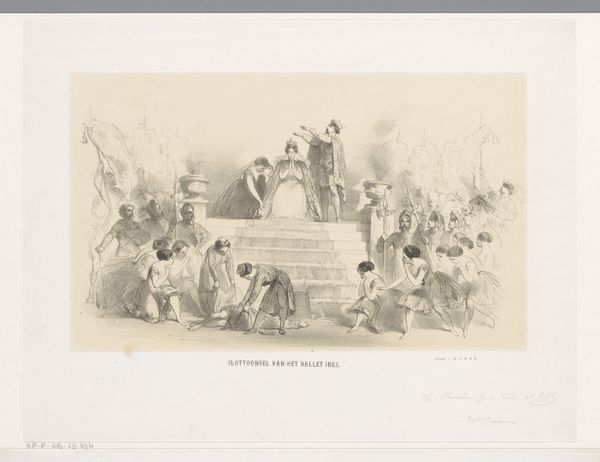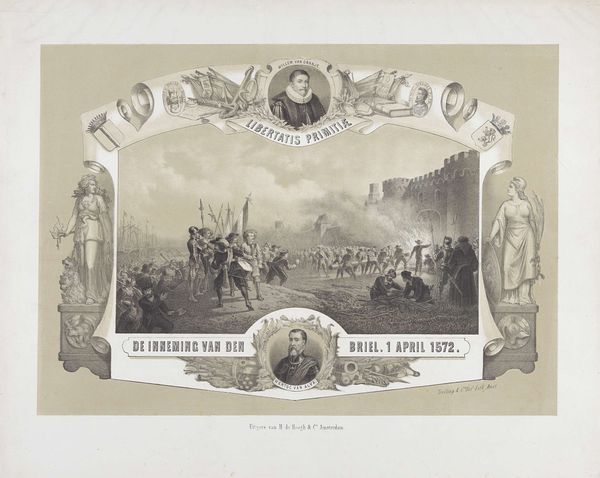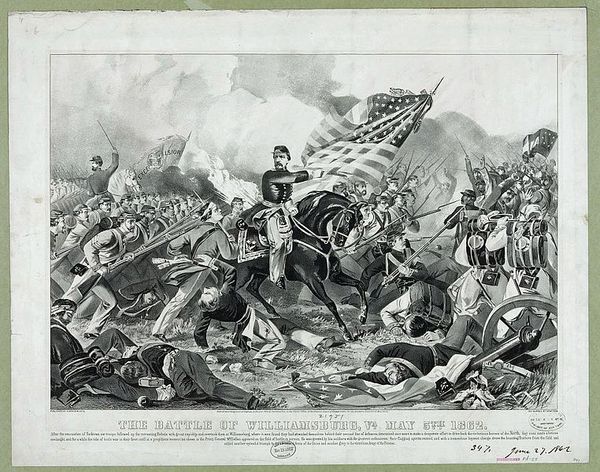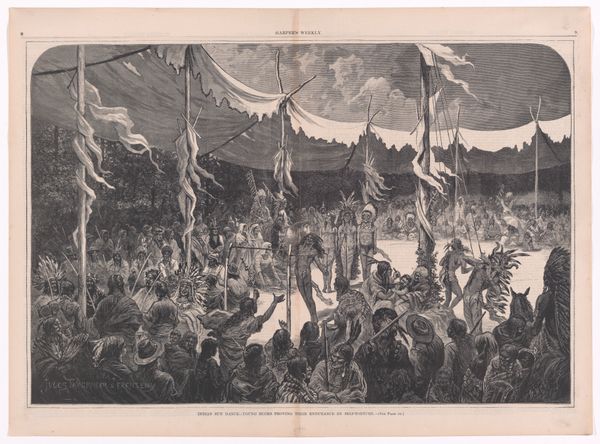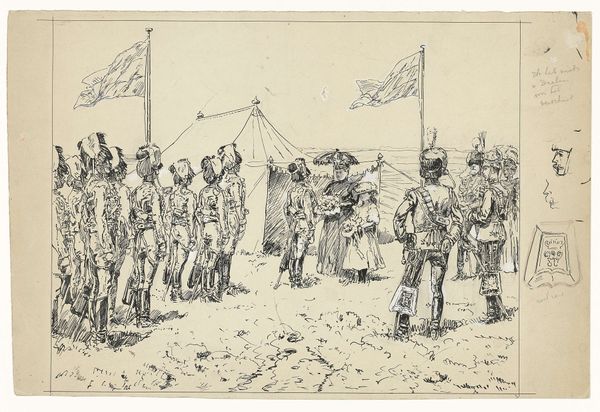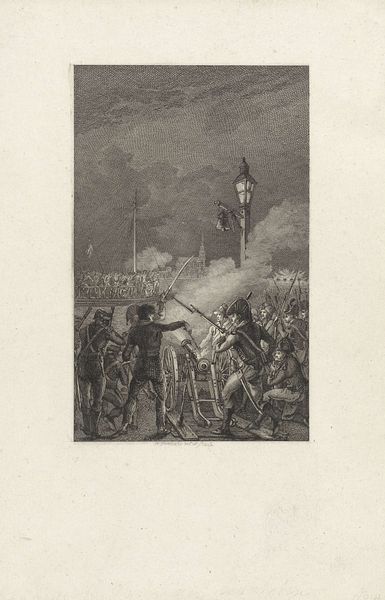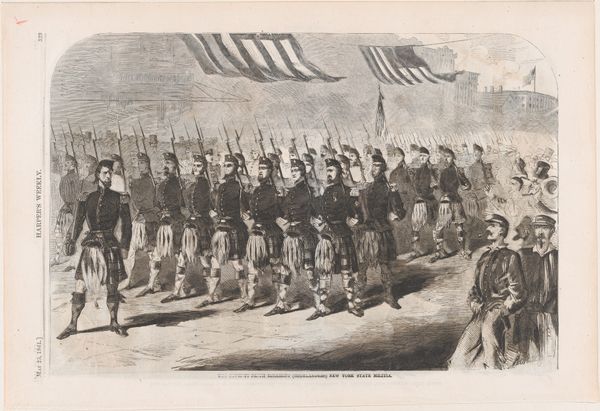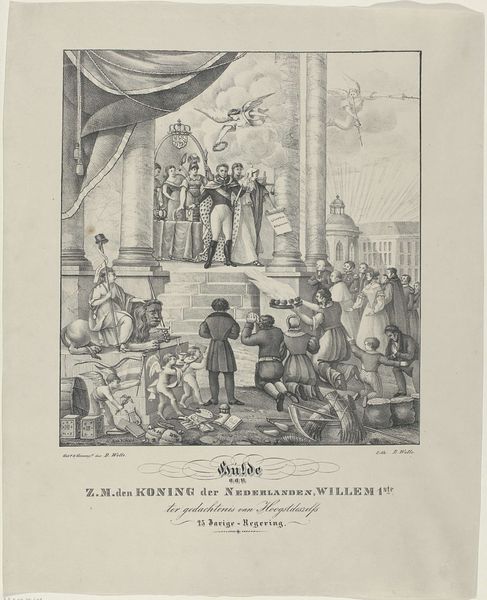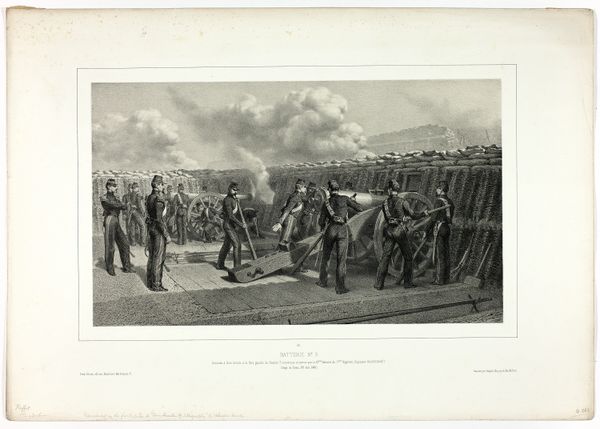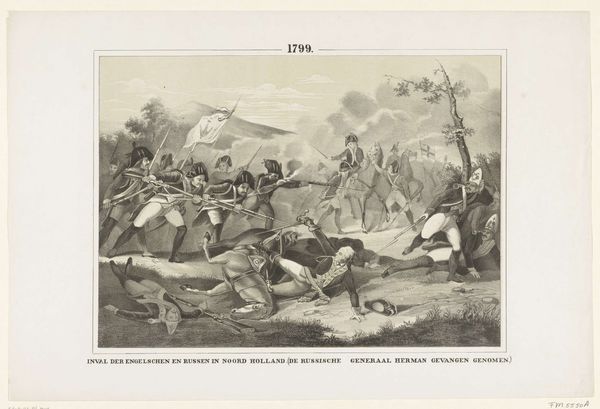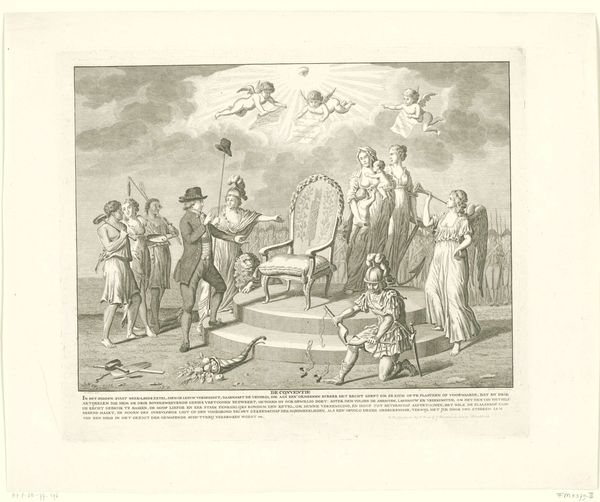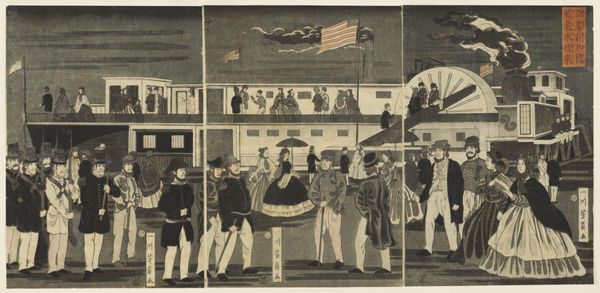
print, engraving
#
allegory
#
narrative-art
# print
#
old engraving style
#
traditional media
#
romanticism
#
cityscape
#
history-painting
#
engraving
Dimensions: height 262 mm, width 357 mm
Copyright: Rijks Museum: Open Domain
Eugène de Loose created this print, Allegorie op de eensgezindheid van de Belgen bij de opstand, in 1830, using the technique of engraving. Engraving is an intaglio process, where the image is incised into a metal plate, which is then inked and printed. In this case, the matrix was probably made of copper. It is a labor-intensive process. The quality of the engraved lines determines the image’s details, from the lion at the top of the pillar to the crowd rejoicing below. The linear quality of the engraving emphasizes the graphic nature of the print, contributing to its documentary feel. But the crisp, clear imagery also belies the hard work that went into its making. The act of cutting the lines into the metal plate, in reverse, and then printing them, demands skill and precision. This artisanal labor stands in contrast to the industrial context depicted - the Belgian Revolution – a shift in the relationship between labor and politics. Ultimately, it is the artist's hand and the engraver's skill that bring this historical moment to life, underscoring the value of craft in shaping our understanding of history.
Comments
No comments
Be the first to comment and join the conversation on the ultimate creative platform.
